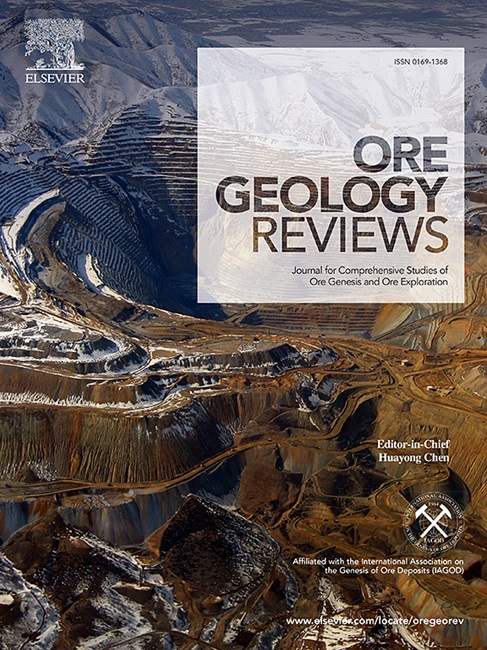Origin and tectonic architecture of the Dargai ophiolitic peridotites and chromitites: A geochemical perspective on platinum-group elements
IF 3.6
2区 地球科学
Q1 GEOLOGY
引用次数: 0
Abstract
The Dargai ophiolites in northern Pakistan are characterized by extensive peridotite and chromitite exposures, however, their geochemical evolution remains debated. Here we investigate the mineral chemistry and platinum-group elements (PGEs) of the Dargai ophiolitic peridotites and associated chromitites to elucidate their genesis and tectonic evolution. Olivine, pyroxenes, and spinel compositions suggest a forearc setting, with Dargai peridotites representing refractory mantle residues formed through two stages of melting. Initial low-degree melting produced less depleted peridotites and high-Al chromitites with mid-ocean ridge affinity, followed by high-degree melting resulting in the formation of high-Cr chromitites and highly depleted peridotites in a supra-subduction zone. The depletion of Palladium and Platinum in high-Cr chromitites suggests that they were formed from sulfur-undersaturated melts, while enrichment in high-Al chromitites reflects that they were formed from sulfur-saturated parental melts. Melt impregnation after partial melting influenced the geochemical signatures, revealing interactions between peridotite and infiltrating melts. The geochemical evolution, combined with melt modeling, suggests the formation of MORB-like melts during proto-forearc spreading and the formation of boninitic melts during mature arc formation, explaining the co-occurrence of high-Al and high-Cr chromitites.

大盖蛇绿橄榄岩和铬铁矿的成因与构造构造:铂族元素的地球化学视角
巴基斯坦北部达盖蛇绿岩具有广泛的橄榄岩和铬铁矿暴露特征,但其地球化学演化仍存在争议。本文对大盖蛇绿橄榄岩及其伴生铬铁矿进行了矿物化学和铂族元素(PGEs)研究,以阐明其成因和构造演化。橄榄石、辉石和尖晶石组成显示出弧前环境,大盖橄榄岩代表了经过两个阶段熔融形成的难熔地幔残留物。初始低度熔融形成贫铬含量较少的橄榄岩和高铝铬铁矿,具有洋中脊亲和性,随后高度熔融形成超俯冲带的高铬铬铁矿和高铝铬铁矿。高铬铬铁矿中钯和铂的富集表明它们是由硫不饱和熔体形成的,而高铝铬铁矿中钯和铂的富集表明它们是由硫饱和母熔体形成的。部分熔融后熔体浸渍影响了地球化学特征,揭示了橄榄岩与渗透熔体之间的相互作用。地球化学演化结合熔体模拟表明,原弧前扩张过程中形成了morb类熔体,成熟弧形成过程中形成了硼质熔体,解释了高铝和高铬铬铁矿的共生。
本文章由计算机程序翻译,如有差异,请以英文原文为准。
求助全文
约1分钟内获得全文
求助全文
来源期刊

Ore Geology Reviews
地学-地质学
CiteScore
6.50
自引率
27.30%
发文量
546
审稿时长
22.9 weeks
期刊介绍:
Ore Geology Reviews aims to familiarize all earth scientists with recent advances in a number of interconnected disciplines related to the study of, and search for, ore deposits. The reviews range from brief to longer contributions, but the journal preferentially publishes manuscripts that fill the niche between the commonly shorter journal articles and the comprehensive book coverages, and thus has a special appeal to many authors and readers.
 求助内容:
求助内容: 应助结果提醒方式:
应助结果提醒方式:


